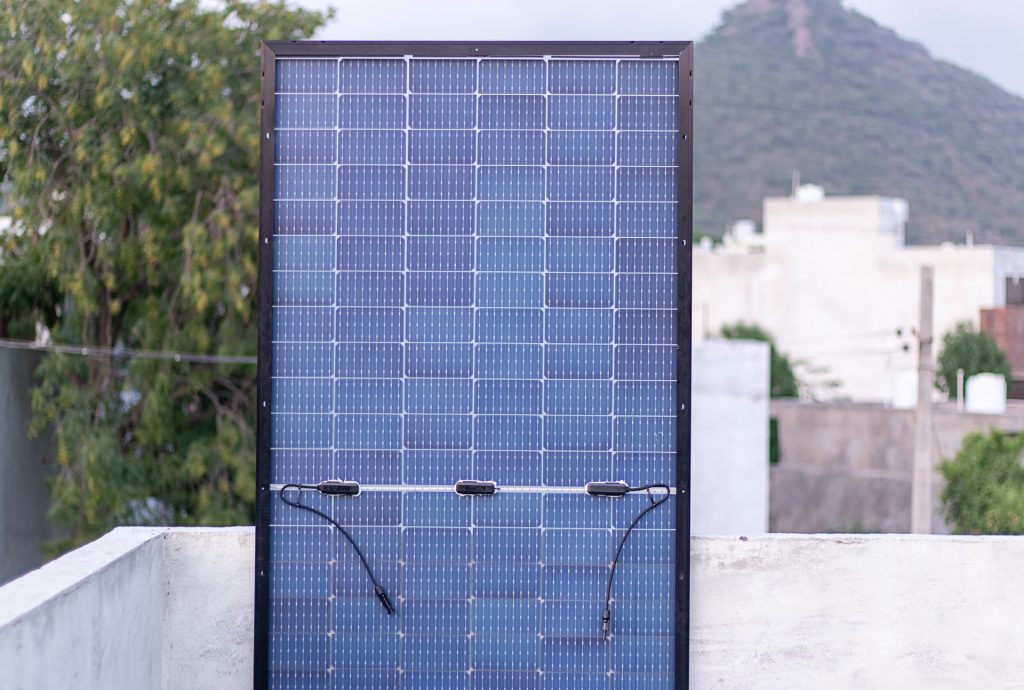Bifacial Solar Panels Guide: Environmental engineers and scientists are on the hunt for new resources and technologies as the demand for clean energy rises. Solar power is currently dominating the market, delivering the most cost-effective electricity with limited ecological impacts. However, conventional photovoltaic panels have efficiency limitations, pushing researchers to develop technological advancements.
The design of rooftop panels helps sunlight reach the external layer and directly produces clean electricity. They convert solar radiation into energy at an average rate of 20%, supporting residential uses. President Biden plans on developing an emissionless electric grid in his plan for increased efficiency levels.
By Jane Marsh
What Are Bifacial Solar Panels?
Scientists developed bifacial solar panels as an efficiency enhancement method. Conventional photovoltaic (PV) panels work by absorbing sunlight into solar cells. The light knocks electrons free within a cell. Electrons flow through the system, creating an electric current, which wires capture and convert into a usable electricity source. PV panels contain solar cells on one side, limiting power conversion rates.
Bifacial panels differ from the original PV version, projecting cells on both sides. They can produce clean energy while the sun is rising and setting to maximize electricity output levels. Additionally, the panels are ultraviolet (UV) resistant, which enhances their durability.
Beyond their increased durability levels, bifacial solar panels hold various benefits for owners. They also possess limitations that decrease the technology’s success.

Advantages
Bifacial solar panels create more clean energy, decreasing a consumer’s reliance on fossil fuels. We reduce the enhanced greenhouse effects when using emissionless power. The Earth naturally creates heat from sunlight, warms its surface, reabsorbs unneeded energy and sends it to space.
When greenhouse gas emissions invade the atmosphere, they increase Earth’s heat production rate. They also trap excess energy in the environment, raising the global temperature over time. Relying on bifacial solar panels as alternative energy sources can conserve the climate, ecosystem and natural resources.
Double-sided panels also help consumers access the extended solar investment tax credit (ITC). After individuals make a clean energy purchase, they are eligible for a partial break on their taxes, increasing their savings. The ITC increases the public’s access to solar energy without putting anyone in debt.
Bifacial panels also have a 27% energy yield, increasing their efficiency in comparison to PV versions. Their high-power production rate allows owners to generate more clean electricity in smaller spaces.
They also decrease an owner’s utility costs while shrinking their carbon footprints. Solar is the most cost-effective electricity source to date. When individuals opt for bifacial panels, they can meet their energy needs without relying on the grid.
Expanding double-sided panel uses and sales improves the job market. Companies must hire maintenance, installation and data collection professionals to meet consumers’ needs. The solar industry created nearly a quarter-million jobs to date, supporting the economy. As the industry continuously expands, we can expect an increased demand for bifacial solar workers.
Disadvantages
Because bifacial solar is a relatively new technology, its prices are higher than PV panels. Installation costs are nearly 0.05 cents more per watt than conventional systems. Some professionals predict owners will quickly pay off the installation fees with increased utility savings.
The panel’s design also limits its installation locations. Their double-sided cells reduced their compatibility with rooftops. Bifacial solar needs open space to achieve optimal energy outputs.
They generate the cleanest energy on solar farms because of optimal sun exposure. Though bifacial solar panels have a couple of cons, they are still effective clean energy sources. They can increase electricity production while shrinking an owner’s carbon footprint.
Making Solar Decisions
After exploring the pros and cons of bifacial panels, you may want to invest in solar energy. It is essential to evaluate your installation space, budget and energy consumption patterns before making a purchase. Then, you can reach out to a local distribution and installation company and choose a panel type that best fits your energy needs.